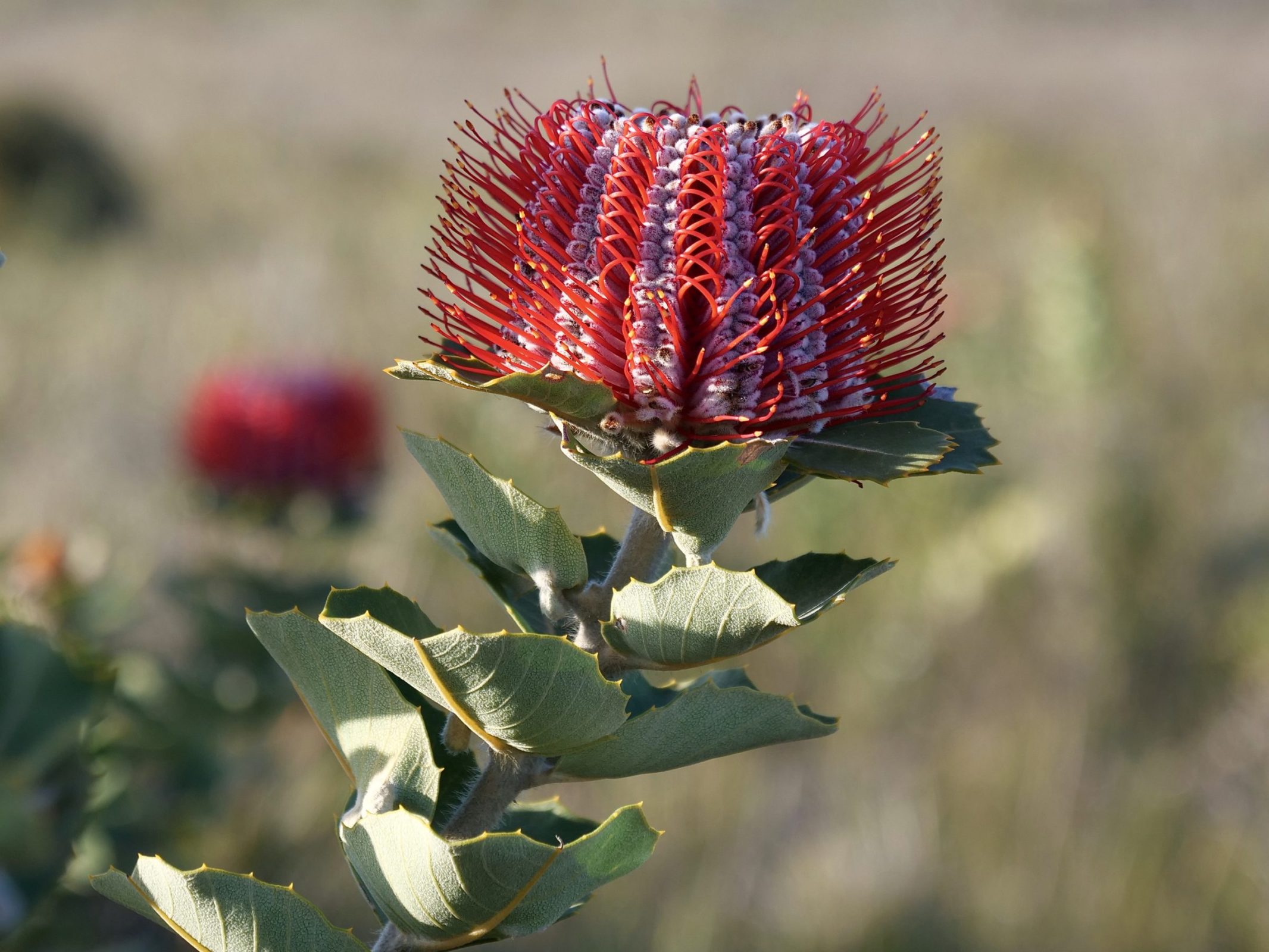Banksia coccinea – Scarlet Banksia, also known as “Albany Banksia” or “Waratah Banksia” – is globally popular with gardeners and florists.
Its natural range, however, covers a mere smidgeon of near-coastal southern Western Australia.
Australia has 79 Banksia-proper species.
61 of them occur naturally only in WA’s southwest.
What most people think of as a “Banksia flower” is in fact a flower spike; typically, one spike has hundreds of flowers, although in some species one spike can have thousands of flowers.
Banksia species can be remarkably unlike.
Scarlet Banksia is particularly distinctive, and has no close relatives.
All Banksias depend on animal pollinators.
Most species produce an appropriate scent – sweet for birds, mouse-like for mammals and rodents.
Scarlet Banksia flowers, however, produce no human-detectable scent.
Somehow, birds are attracted, nonetheless.
Waychincup is a particularly splendid place to experience Scarlet Banksias in the wild.
Discover more about Scarlet Banksia, here.
As previously stated, THE book to buy if you wish to know more about Banksias is this one, to which this post is indebted.
(the hyperlink will enable you to buy the book, whilst also supporting Kings Park, which is much more than just a great park/botanic garden. Kings Park has played a key role in researching Banksias’ biology, and in helping gardeners to propagate Banksias and other hitherto “difficult” or “impossible” WA-endemic flowering plants)
